The Importance of Bio-diversity in Sustainable Living
Biodiversity is not just a buzzword; it’s the very fabric that holds our ecosystems together. Imagine a world where every plant, animal, and microorganism plays a role in creating a balanced environment. This intricate web of life is essential for sustainable living, as it provides the resources we need to thrive. From the air we breathe to the food we eat, biodiversity underpins our existence. But why should we care about preserving it? Well, the reality is that biodiversity enhances resilience in ecosystems, allowing them to withstand changes and recover from disturbances. Without it, we risk losing the very resources that sustain us.
The benefits of biodiversity extend beyond just ecological stability; they also encompass human health, economic prosperity, and cultural richness. For instance, diverse ecosystems provide essential services such as clean air and water, fertile soil, and a variety of foods. Think of biodiversity as a safety net; when one species falters, others can step in to maintain balance. This interconnectedness is crucial, especially in times of environmental stress.
Furthermore, biodiversity contributes to our well-being in ways we often overlook. Did you know that many of our medicines come from plants and animals? The relationship between biodiversity and healthcare is profound. As we continue to explore the natural world, we uncover new medicinal resources that can lead to groundbreaking treatments. However, this treasure trove of potential is threatened by various human activities.
In the following sections, we’ll dive deeper into the role of biodiversity in ecosystem stability, its direct benefits to human well-being, and the challenges it faces. We’ll also explore how traditional and modern agricultural practices impact biodiversity, and the importance of conservation efforts. So, buckle up as we embark on this journey to understand the critical role biodiversity plays in sustainable living. Together, we can ensure that future generations inherit a vibrant and diverse planet.
Biodiversity enhances ecosystem resilience, allowing environments to withstand and recover from disturbances. This section discusses how diverse species contribute to the stability and health of ecosystems.
Human health and well-being are closely linked to biodiversity. This section explores how diverse ecosystems provide essential services such as clean air, water, and food security.
Agricultural biodiversity is crucial for food security, providing varied crops and livestock. This subheading examines its importance in combating hunger and malnutrition.
Traditional farming methods promote biodiversity through crop rotation and polyculture. This section highlights how these practices support sustainable agriculture and ecosystem health.
Modern agriculture often prioritizes monoculture, threatening biodiversity. This part discusses the challenges posed by industrial farming techniques and their impact on ecosystems.
Many medicines are derived from plants and animals, underscoring the importance of biodiversity in healthcare. This section highlights the relationship between biodiversity and pharmaceutical development.
Biodiversity faces numerous threats, including habitat loss, pollution, and climate change. This section outlines these challenges and their implications for sustainable living.
Climate change poses significant risks to biodiversity, affecting species distribution and ecosystem functions. This subheading explores the relationship between climate change and biodiversity loss.
Effective conservation strategies are essential for protecting biodiversity. This section discusses various approaches, including protected areas, sustainable practices, and community involvement in conservation efforts.
Q: Why is biodiversity important for humans?
A: Biodiversity is essential for human well-being as it provides vital ecosystem services, such as clean air, water, and food security. It also contributes to health through medicinal resources.
Q: What are the main threats to biodiversity?
A: The main threats include habitat loss, pollution, climate change, and overexploitation of resources. These factors can lead to species extinction and ecosystem degradation.
Q: How can we help preserve biodiversity?
A: Individuals can help by supporting sustainable practices, reducing waste, participating in conservation efforts, and advocating for policies that protect natural habitats.
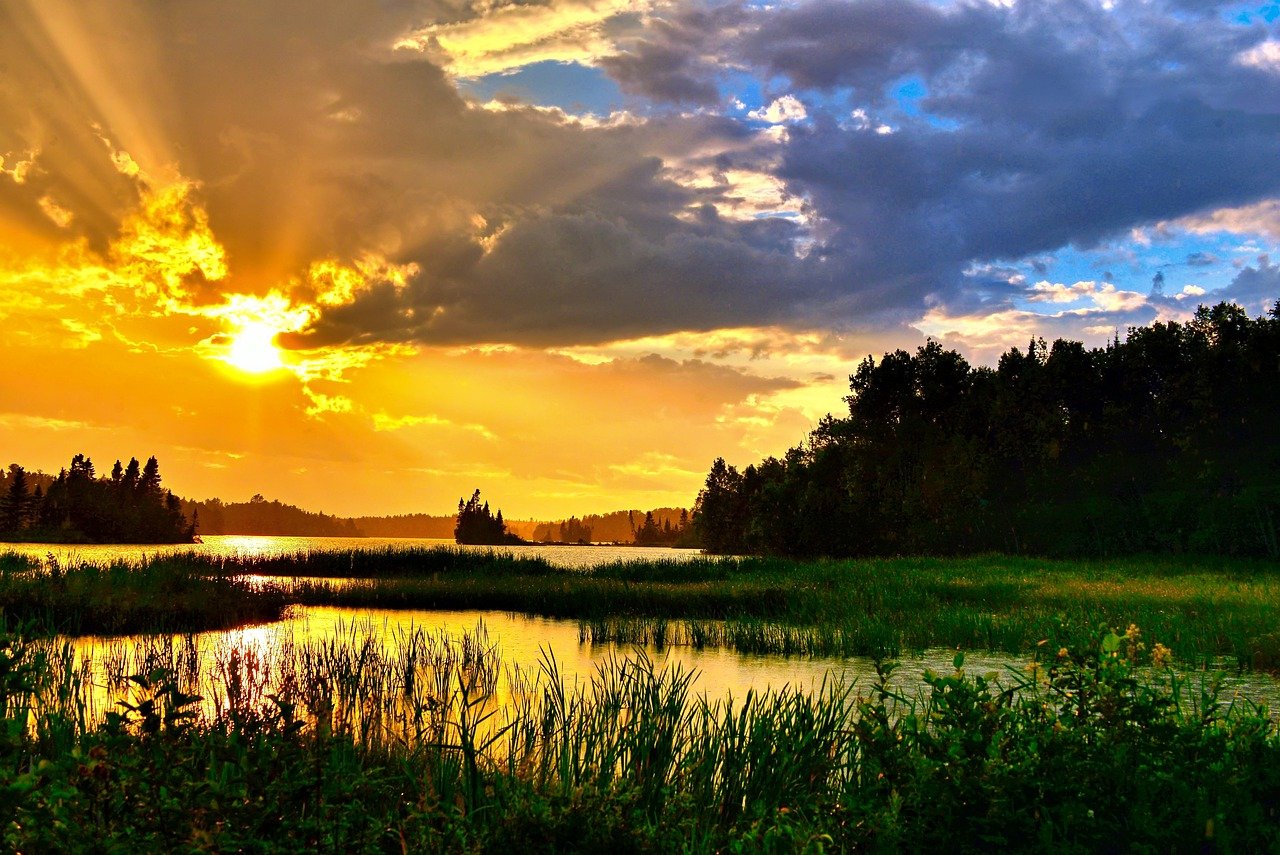
The Role of Biodiversity in Ecosystem Stability
Biodiversity is not just a buzzword thrown around in environmental discussions; it is the very backbone of ecosystem stability. Think of it as a complex web where each strand—each species—plays a vital role in maintaining the overall structure and function of the ecosystem. When we talk about biodiversity, we are referring to the variety of life on Earth, including the different species of plants, animals, and microorganisms, as well as the genetic diversity within those species and the ecosystems they form.
Imagine a world where every species is like a piece of a jigsaw puzzle. If you remove just one piece, the entire picture becomes incomplete. Similarly, biodiversity enhances the resilience of ecosystems, allowing them to withstand disturbances such as natural disasters, diseases, and human-induced changes. For instance, diverse ecosystems, like tropical rainforests or coral reefs, can better absorb shocks and recover from disturbances compared to monocultures, which are more fragile and susceptible to collapse.
The interconnections between species are profound. For example, consider the role of pollinators like bees and butterflies. These creatures are essential for the reproduction of many plants, which in turn provide food and habitat for a multitude of other species. If pollinators were to decline, the effects would ripple through the ecosystem, impacting not only plant life but also the animals that depend on those plants for survival. This interconnectedness is a testament to how biodiversity contributes to ecosystem stability.
Furthermore, biodiversity plays a crucial role in nutrient cycling and energy flow within ecosystems. Different species have unique roles—some are producers, while others are consumers or decomposers. This division of labor ensures that nutrients are recycled efficiently, promoting a healthy environment. For instance, decomposers like fungi and bacteria break down dead organic matter, returning essential nutrients to the soil, which supports plant growth. Without this diversity of roles, ecosystems would struggle to function effectively.
However, the stability offered by biodiversity is not a given; it requires protection and nurturing. Human activities such as deforestation, pollution, and urbanization pose significant threats to biodiversity. As we encroach upon natural habitats, we risk losing species that play critical roles in maintaining ecosystem balance. This is why conservation efforts and sustainable practices are vital. By protecting diverse ecosystems, we enhance their resilience and ability to adapt to changing conditions.
In summary, biodiversity is the cornerstone of ecosystem stability. It enhances resilience, supports essential ecological processes, and ensures the health of our planet. As stewards of the Earth, it is our responsibility to recognize the importance of biodiversity and take action to preserve it for future generations. After all, a stable ecosystem benefits not just the environment but also human well-being, making it a win-win situation.
- What is biodiversity? Biodiversity refers to the variety of life on Earth, including different species, genetic variations, and ecosystems.
- Why is biodiversity important for ecosystems? Biodiversity enhances ecosystem resilience, allowing environments to withstand disturbances and maintain essential ecological processes.
- How does human activity affect biodiversity? Human activities such as deforestation, pollution, and urbanization threaten biodiversity by destroying habitats and leading to species extinction.
- What can we do to protect biodiversity? We can protect biodiversity by supporting conservation efforts, practicing sustainable agriculture, and reducing our ecological footprint.
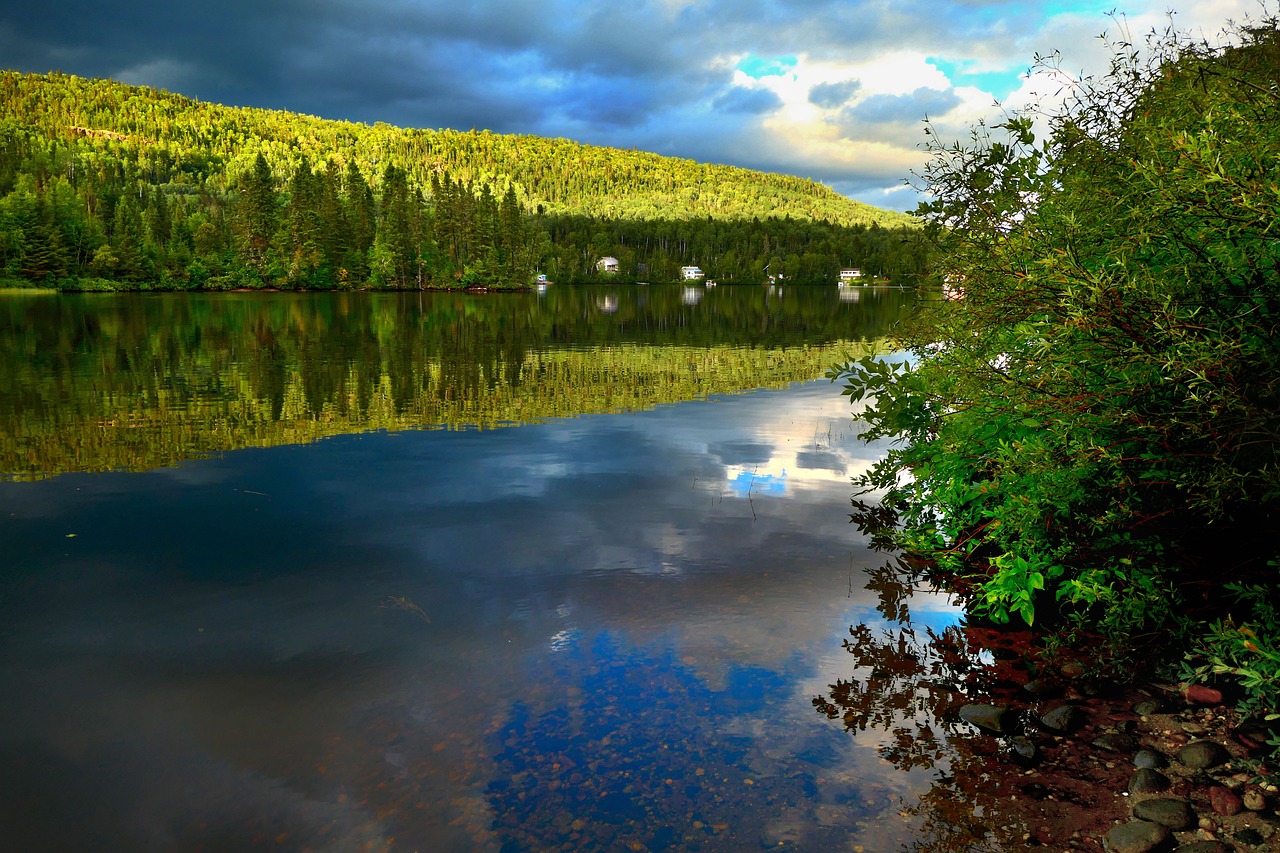
Benefits of Biodiversity for Human Well-being
Biodiversity is not just a buzzword; it’s the very fabric of our existence. Imagine a world where every breath you take is filled with clean air, every sip of water is pure, and every meal is nutritious. This isn’t just a dream, but a reality made possible by the rich tapestry of life that surrounds us. Biodiversity enhances our quality of life in so many ways, and understanding its benefits can help us appreciate why we must protect it.
One of the most significant ways biodiversity contributes to human well-being is through the provision of ecosystem services. These services can be categorized into four main types:
- Provisioning Services: These include the products we directly use, such as food, fresh water, and raw materials. For instance, a variety of plants and animals provide the nutrients we need to thrive.
- Regulating Services: Biodiversity helps regulate climate, air quality, and water cycles. Healthy ecosystems act like natural buffers against climate extremes, making our environments more resilient.
- Supporting Services: These are the foundational processes that enable ecosystems to function, such as nutrient cycling and soil formation. A diverse ecosystem is more efficient in these processes, ensuring that our planet remains livable.
- Cultural Services: Biodiversity enriches our lives culturally and spiritually. From the beauty of a sunset over a forest to the serenity of a beach, nature provides a backdrop for our cultural practices and personal well-being.
Moreover, biodiversity plays a crucial role in food security. With a wide variety of crops and livestock, we can ensure a more stable food supply. Agricultural diversity is essential in combating hunger and malnutrition, allowing us to adapt to changing climate conditions and pests. For example, traditional practices such as crop rotation and polyculture not only enhance yields but also promote resilience against diseases and climate variability.
Speaking of food security, let’s not forget about the medicinal resources that biodiversity provides. Many modern medicines are derived from plants and animals, emphasizing the importance of preserving diverse species. A staggering percentage of prescription drugs are based on compounds found in nature, showcasing a direct link between biodiversity and healthcare. As we continue to explore the wonders of nature, who knows what potential breakthroughs lie in the undiscovered species of our planet?
In essence, the benefits of biodiversity extend far beyond mere survival. They touch on every aspect of our lives, from the food we eat to the air we breathe. As we navigate through the complexities of modern living, it’s crucial to remember that biodiversity is our ally in achieving a sustainable future. By valuing and protecting the diverse life forms around us, we are not only ensuring our well-being but also the health of our planet for generations to come.
1. What is biodiversity?
Biodiversity refers to the variety of life on Earth, including the diversity of species, ecosystems, and genetic variations within species. It is essential for maintaining the balance of ecosystems and providing numerous benefits to humanity.
2. How does biodiversity affect food security?
Biodiversity contributes to food security by providing a variety of crops and livestock, which helps ensure a stable food supply. Diverse agricultural practices can improve resilience to pests and climate change, reducing the risk of crop failures.
3. Why is biodiversity important for medicine?
Many medicines are derived from natural sources, including plants and animals. Preserving biodiversity allows researchers to discover new compounds that can lead to the development of new medications, making biodiversity crucial for advancements in healthcare.
4. What are some threats to biodiversity?
Biodiversity faces threats from habitat loss, pollution, climate change, and invasive species. These factors can lead to species extinction and disrupt ecosystem functions, ultimately affecting human well-being.
5. How can individuals help protect biodiversity?
Individuals can help protect biodiversity by supporting sustainable practices, reducing waste, conserving water, and participating in local conservation efforts. Every small action counts towards preserving the rich diversity of life on our planet.
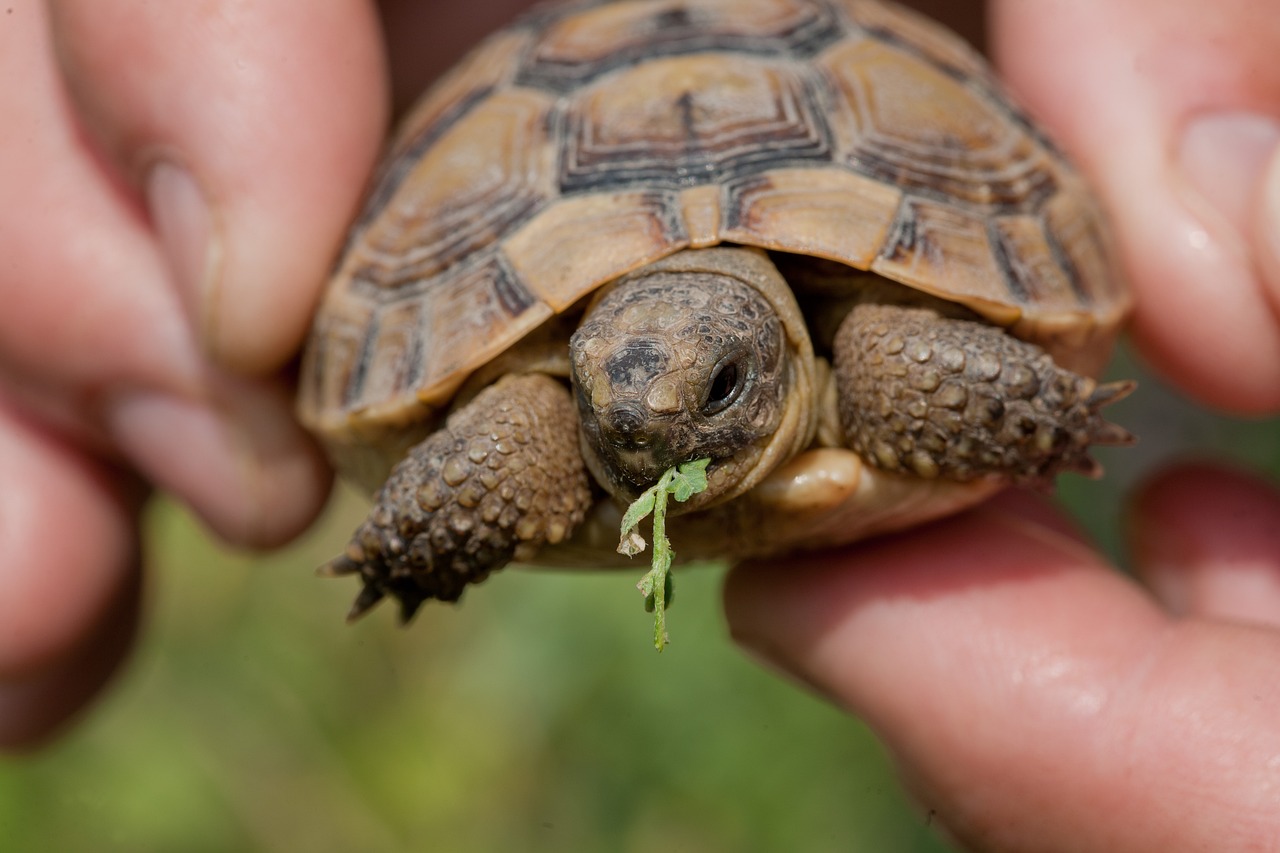
Food Security and Agricultural Diversity
Food security is a pressing global issue that affects millions of people every day. When we talk about food security, we’re referring to the availability and access to sufficient, safe, and nutritious food to meet dietary needs for an active and healthy life. But did you know that agricultural diversity plays a pivotal role in ensuring food security? That's right! The variety of crops and livestock we cultivate not only enriches our diets but also strengthens our food systems against various challenges, such as climate change and pests.
Imagine a world where our meals are as diverse as the cultures that create them. This diversity is not just a feast for the senses; it’s a safety net for our food supply. When farmers grow a wide range of crops, they are less vulnerable to diseases and pests that might wipe out a single variety. For instance, if a farmer relies solely on one type of crop, like wheat, and a disease strikes, they could face devastating losses. However, by planting multiple varieties, the risk is spread out, and the chances of at least some crops thriving increase.
Moreover, agricultural diversity contributes to nutritional security. A diverse diet is essential for good health, providing a range of vitamins and minerals that our bodies need to function properly. By cultivating a variety of crops, we can ensure that communities have access to a balanced diet, reducing the risk of malnutrition. For example, traditional diets that include various fruits, vegetables, grains, and proteins are far superior to diets that rely heavily on just a few staples.
To illustrate the importance of agricultural diversity, let’s take a look at the following table that highlights the benefits of diverse crops versus monoculture practices:
| Aspect | Diverse Crops | Monoculture |
|---|---|---|
| Resilience to Disease | High | Low |
| Nutritional Value | High | Low |
| Soil Health | Improved | Degraded |
| Economic Stability | Higher | Lower |
In addition to enhancing resilience and nutritional quality, agricultural diversity also plays a significant role in environmental sustainability. By rotating crops and using polyculture techniques, farmers can improve soil health, reduce the need for chemical fertilizers, and lower the risk of soil erosion. These practices not only benefit the farmers but also the ecosystem as a whole. You see, when we nurture a variety of plants and animals, we are essentially creating a more balanced and sustainable agricultural landscape.
However, it’s essential to recognize that modern agricultural practices often lean towards monoculture, which can threaten this diversity. Large-scale farming operations frequently prioritize a single crop to maximize profits, leading to a decline in biodiversity. This shift not only jeopardizes food security but also increases vulnerability to pests and diseases. To combat this, we must advocate for sustainable farming practices that promote agricultural diversity and support local farmers in their efforts to cultivate a variety of crops.
In conclusion, the link between food security and agricultural diversity is undeniable. By embracing a wide range of crops and livestock, we can foster resilience, enhance nutrition, and promote environmental sustainability. It’s a win-win situation that benefits not only our plates but also the planet. So the next time you sit down for a meal, remember the importance of diversity in your food choices. Together, we can pave the way for a more secure and sustainable future.
- What is food security? Food security refers to the availability and access to sufficient, safe, and nutritious food for an active and healthy life.
- Why is agricultural diversity important? Agricultural diversity enhances resilience against pests and diseases, improves nutritional quality, and supports environmental sustainability.
- How does monoculture affect food security? Monoculture can decrease resilience to diseases and pests, making food systems more vulnerable and reducing overall biodiversity.
- What can be done to promote agricultural diversity? Supporting local farmers, advocating for sustainable practices, and educating communities about the benefits of diverse crops can help promote agricultural diversity.
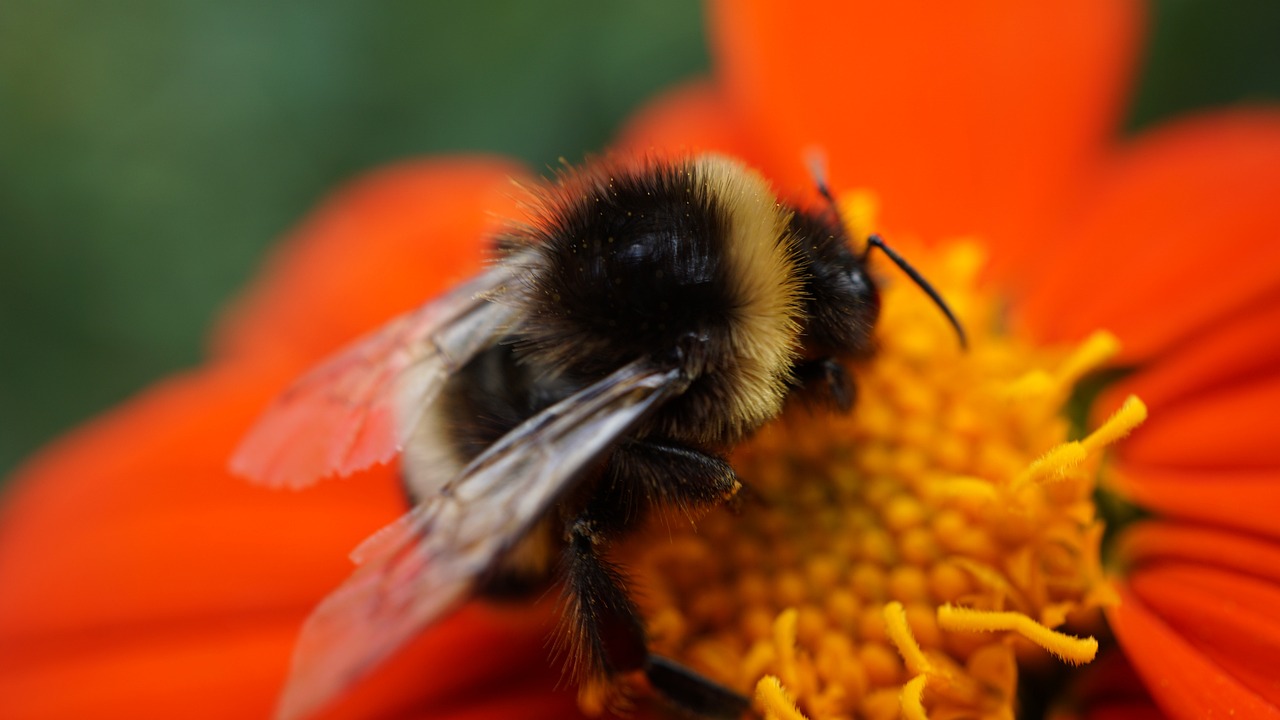
Traditional Farming Practices
When we think about , it's like stepping into a time machine that takes us back to a more sustainable way of living. These practices are not just relics of the past; they are the backbone of biodiversity and a key player in the fight against modern agricultural challenges. Imagine a world where farmers rotate their crops, allowing the soil to breathe and replenish its nutrients. This method not only enhances soil health but also reduces the need for chemical fertilizers, which can be harmful to both the environment and our health.
One of the most fascinating aspects of traditional farming is the concept of polyculture. Unlike modern monoculture, where a single crop dominates the landscape, polyculture involves cultivating multiple crops in the same space. This diversity mimics natural ecosystems, creating a balanced environment where different plants can thrive together. For instance, planting legumes alongside cereals can enhance soil fertility, as legumes fix nitrogen, a vital nutrient for plant growth. By embracing these methods, farmers can create a more resilient agricultural system that can withstand pests and diseases.
Furthermore, traditional farming practices often emphasize the importance of local knowledge and community involvement. Farmers have been passing down their wisdom through generations, understanding the specific needs of their land and the crops that flourish within it. This intergenerational knowledge not only preserves biodiversity but also fosters a sense of community and connection to the land. In many cultures, farming is not just a means of survival but a way of life that is deeply intertwined with identity and tradition.
However, it’s crucial to recognize the challenges that traditional farming faces today. As industrial agriculture continues to expand, many of these practices are being overshadowed by the allure of higher yields and faster profits. The shift towards monoculture can lead to a decline in biodiversity, soil degradation, and increased vulnerability to climate change. To combat this, we must advocate for policies that support sustainable farming practices and recognize the vital role they play in preserving our planet's biodiversity.
In conclusion, traditional farming practices are more than just methods of cultivation; they are a testament to the harmony between humans and nature. By embracing these age-old techniques, we can not only enhance biodiversity but also pave the way for a more sustainable future. It's time to reconnect with our roots and recognize that the solutions to modern agricultural challenges may lie in the wisdom of our ancestors.
- What are traditional farming practices? Traditional farming practices refer to agricultural methods that have been passed down through generations, emphasizing sustainability, biodiversity, and community involvement.
- How do traditional farming practices benefit biodiversity? These practices promote crop diversity, enhance soil health, and create balanced ecosystems that can resist pests and diseases.
- Why are modern agricultural methods a threat to biodiversity? Modern methods often prioritize monoculture, which reduces crop diversity and can lead to soil degradation and increased vulnerability to climate change.
- How can we support traditional farming practices? Supporting local farmers, advocating for sustainable agricultural policies, and educating ourselves and others about the importance of biodiversity are key ways to help.

Modern Agricultural Challenges
In today's fast-paced world, agriculture faces a myriad of challenges that threaten not only biodiversity but also the very fabric of sustainable living. One of the most pressing issues is the **shift towards monoculture**—the practice of cultivating a single crop over a wide area. While this method can maximize short-term yields, it often leads to a significant loss of biodiversity. Imagine a vibrant ecosystem where various plants and animals coexist; now picture that same area reduced to a uniform field of corn or soybeans. This shift diminishes the natural resilience of ecosystems, making them more vulnerable to pests, diseases, and environmental changes.
Furthermore, modern agricultural practices often rely heavily on **chemical fertilizers and pesticides**. While these substances can boost production, they also pose serious risks to both the environment and human health. Excessive use of fertilizers can lead to nutrient runoff, polluting waterways and creating dead zones where aquatic life cannot survive. Pesticides, on the other hand, may kill not only the targeted pests but also beneficial insects, such as bees, which play a crucial role in pollination. The consequence? A **dramatic decline in biodiversity** both in agricultural fields and surrounding ecosystems.
Another challenge is the **impact of climate change**. Rising temperatures, altered precipitation patterns, and extreme weather events can disrupt agricultural productivity. Farmers are often left grappling with how to adapt their practices to these new realities. For instance, droughts can decimate crop yields, while floods can wash away entire fields. This unpredictability forces farmers to rely on a limited number of crop varieties that can withstand these changes, further exacerbating the cycle of biodiversity loss.
To truly understand the implications of these challenges, we must also consider the **socio-economic factors** at play. Many smallholder farmers, who are the backbone of food production in many regions, often lack access to resources and technology that could help them implement more sustainable practices. They may be caught in a cycle of poverty, where they have no choice but to follow conventional methods that prioritize short-term gains over long-term sustainability. This situation is not just about farming; it’s about the future of our planet and the health of our communities.
In light of these challenges, it becomes clear that we need to rethink our approach to agriculture. Emphasizing **agricultural diversity** and sustainable practices can pave the way for a healthier ecosystem. For instance, integrating crop rotation and polyculture can restore balance to agricultural systems and enhance resilience against pests and diseases. By nurturing a diverse range of crops, we not only safeguard our food supply but also promote a thriving environment where biodiversity can flourish.
In summary, the modern agricultural landscape is fraught with challenges that threaten biodiversity and sustainable living. Addressing these issues requires a collective effort to promote sustainable practices that prioritize ecological health alongside agricultural productivity. The road ahead may be difficult, but with commitment and innovation, we can create a future where both agriculture and biodiversity thrive.
- What is monoculture and why is it a problem?
Monoculture is the agricultural practice of growing a single crop species over a large area. It reduces biodiversity and makes ecosystems more vulnerable to pests and diseases. - How do chemical fertilizers impact biodiversity?
Chemical fertilizers can lead to nutrient runoff, polluting waterways and harming aquatic life. They also disrupt the natural balance of soil ecosystems. - What role does climate change play in agricultural challenges?
Climate change alters weather patterns, making agriculture unpredictable. It can lead to crop failures due to droughts or floods, pushing farmers to rely on fewer crop varieties. - How can we promote agricultural diversity?
Encouraging practices like crop rotation and polyculture can help restore biodiversity and improve ecosystem resilience.
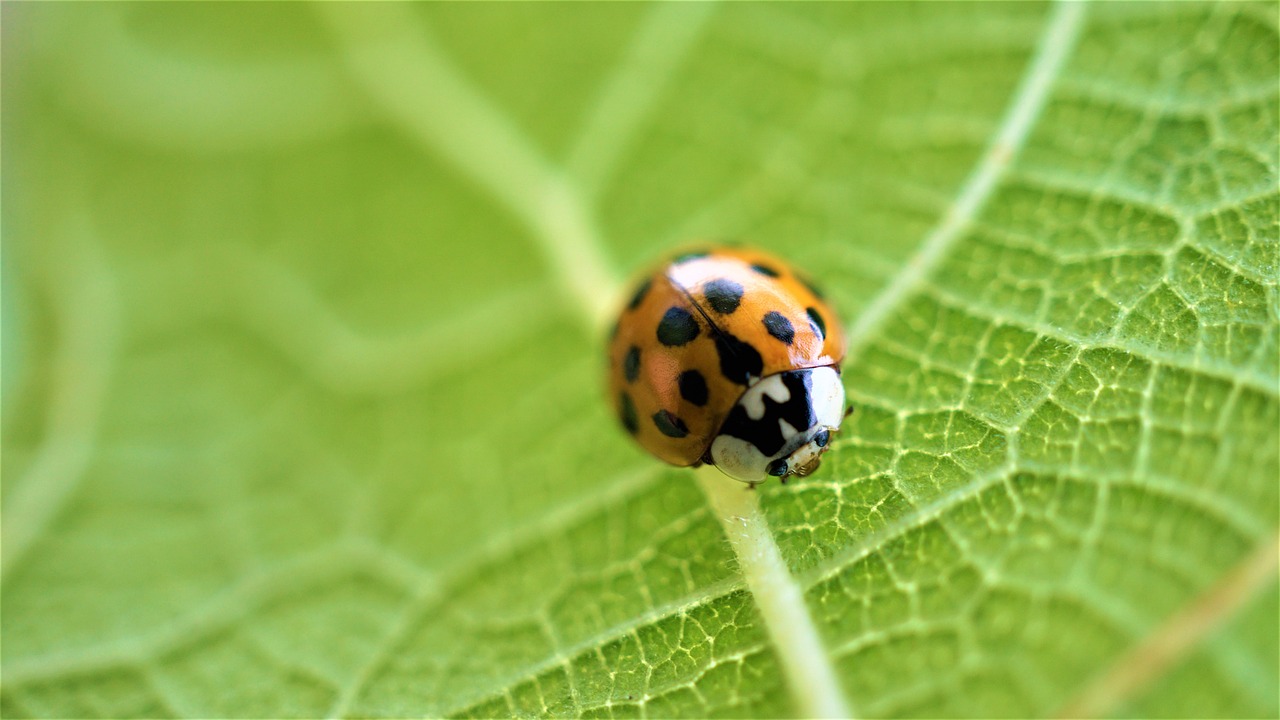
Medicinal Resources from Biodiversity
The connection between biodiversity and medicine is profound and multifaceted. Many of the medicines we rely on today have their origins in the vast array of plants and animals that inhabit our planet. Think about it: the natural world is a treasure trove of potential cures, with countless species waiting to be discovered and studied. This rich tapestry of life not only contributes to our health but also forms the backbone of the pharmaceutical industry.
For instance, did you know that approximately 50% of modern medicines are derived from natural compounds? From the pain-relieving properties of willow bark, which led to the development of aspirin, to the anti-cancer properties found in the Pacific yew tree, the examples are abundant. These connections highlight the critical need for preserving our natural resources, as losing a single species could mean losing a potential cure for a disease.
Moreover, traditional medicine systems around the world, such as Ayurveda and Traditional Chinese Medicine, rely heavily on biodiversity. They utilize a variety of plants and animal products to treat ailments, showcasing the intricate knowledge that local communities have developed over centuries. This traditional knowledge is not just a relic of the past; it is a living library of medicinal resources that can enhance our understanding of health and wellness.
However, the loss of biodiversity poses a significant threat to these medicinal resources. As habitats are destroyed and species become extinct, we risk losing invaluable genetic material that could lead to breakthroughs in medicine. To illustrate this point, consider the following table that summarizes some key medicinal resources derived from biodiversity:
| Plant/Animal | Medicinal Use | Source |
|---|---|---|
| Willow Bark | Pain relief (Aspirin) | Tree bark |
| Pacific Yew | Cancer treatment (Taxol) | Tree bark |
| Foxglove | Heart conditions (Digoxin) | Plant leaves |
| Quinine | Treatment for malaria | Tree bark |
In conclusion, the relationship between biodiversity and medicinal resources is not just a scientific curiosity; it is a matter of life and death for many. Protecting biodiversity means safeguarding our future health and well-being. By fostering a deeper understanding of this connection, we can take meaningful steps toward conserving our planet's rich biological heritage while ensuring that future generations have access to the medicines they need.
- Why is biodiversity important for medicine? Biodiversity is essential for discovering new medicines and understanding how to treat various health conditions.
- How does habitat loss affect medicinal resources? Habitat loss can lead to the extinction of plant and animal species, which may contain undiscovered medicinal properties.
- What role do traditional medicine practices play in biodiversity? Traditional medicine practices utilize local biodiversity, often relying on plants and animals that have been used for generations, which contributes to the preservation of these species.

Threats to Biodiversity
Biodiversity is not just a buzzword; it's the foundation of our planet's health and resilience. However, this precious resource is under serious threat from various factors that jeopardize the delicate balance of ecosystems. Understanding these threats is crucial for anyone who cares about sustainable living and the future of our planet. So, what exactly are these threats? Let’s dive into the main culprits.
First and foremost, habitat loss stands out as one of the most significant threats to biodiversity. As urban areas expand and agricultural practices intensify, natural habitats are being destroyed at an alarming rate. This destruction forces countless species to either adapt, migrate, or face extinction. Imagine a beautiful forest, home to diverse flora and fauna, suddenly turned into a concrete jungle. The repercussions of such changes are profound, affecting not just wildlife but also human communities that rely on these ecosystems for resources.
Pollution is another major player in the decline of biodiversity. Contaminants from industrial waste, agricultural runoff, and plastic waste infiltrate our air, water, and soil, wreaking havoc on ecosystems. For instance, when fertilizers wash into rivers, they can cause algal blooms that deplete oxygen in the water, leading to dead zones where aquatic life cannot survive. The intricate web of life becomes frayed, and the consequences ripple through the food chain, affecting everything from tiny fish to large mammals.
Climate change is perhaps the most daunting threat we face today. Rising temperatures, changing precipitation patterns, and extreme weather events disrupt the habitats that species have adapted to over millennia. For example, coral reefs, which are among the most biodiverse ecosystems on Earth, are experiencing bleaching due to increased ocean temperatures. This not only threatens marine life but also impacts the livelihoods of millions who depend on these ecosystems for food and tourism. The relationship between climate change and biodiversity loss is a vicious cycle; as species decline, ecosystems become less resilient, making them even more vulnerable to climate impacts.
In addition to these threats, invasive species pose a significant risk to native biodiversity. When non-native species are introduced to an ecosystem—whether accidentally or intentionally—they can outcompete, prey upon, or bring diseases to native species. This disruption can lead to the decline or extinction of local species, further diminishing biodiversity. Think of it like a game of musical chairs; when an outsider joins the game, the dynamics change, and someone is inevitably left without a seat.
To put it all together, the threats to biodiversity can be summarized as follows:
- Habitat Loss: Urbanization and agriculture destroy natural habitats.
- Pollution: Contaminants harm ecosystems and wildlife.
- Climate Change: Alters habitats and threatens species survival.
- Invasive Species: Non-native species disrupt local ecosystems.
These threats are interconnected, creating a web of challenges that require urgent attention. The loss of biodiversity not only affects the environment but also has profound implications for human health and well-being. As we continue to face these challenges, it becomes increasingly important to advocate for sustainable practices and conservation efforts that can help mitigate these threats. By recognizing the value of biodiversity and taking action to protect it, we can ensure a healthier planet for future generations.
Q1: What is biodiversity?
Biodiversity refers to the variety of life on Earth, including the different species of plants, animals, and microorganisms, as well as the ecosystems they form.
Q2: Why is biodiversity important?
Biodiversity is crucial for ecosystem stability, human health, and the provision of essential services such as clean air, water, and food security.
Q3: What are the main threats to biodiversity?
The main threats include habitat loss, pollution, climate change, and invasive species, all of which can lead to a decline in species and ecosystem health.
Q4: How can we help protect biodiversity?
Individuals can help protect biodiversity by supporting conservation efforts, reducing waste, choosing sustainable products, and advocating for policies that protect natural habitats.

Impact of Climate Change on Biodiversity
Climate change is like a ticking time bomb for our planet's biodiversity. As temperatures rise and weather patterns shift, the delicate balance that supports various ecosystems is thrown into chaos. This isn't just an abstract concern; it's a real and pressing issue that affects every living organism on Earth. Imagine a tightrope walker trying to maintain balance in a gusty wind—this is what many species are facing today.
One of the most significant impacts of climate change is the alteration of habitats. As climates shift, many species are forced to migrate to new areas in search of suitable living conditions. Unfortunately, not all species can adapt or move quickly enough. For example, polar bears are losing their sea ice habitat, while coral reefs are experiencing bleaching events due to warmer ocean temperatures. These changes lead to declining populations and, in some cases, extinction.
Moreover, climate change disrupts the timing of natural events, such as flowering and breeding seasons. This mismatch can have devastating effects on food webs. For instance, if insects emerge earlier due to warmer temperatures, but their predators, like birds, do not adjust their breeding cycles accordingly, the birds may find themselves without enough food to feed their young. This ripple effect can destabilize entire ecosystems.
In addition to direct impacts on species, climate change also exacerbates existing threats to biodiversity. For example, the spread of invasive species is facilitated by warmer temperatures, which can outcompete native species for resources. Furthermore, pollution and habitat destruction, already pressing issues, are intensified by the changing climate. As habitats become less hospitable, the pressure on species increases, leading to a vicious cycle of decline.
To illustrate the impact of climate change on biodiversity, consider the following table:
| Impact | Description |
|---|---|
| Habitat Loss | Species are forced to migrate, leading to loss of native habitats. |
| Altered Ecosystem Dynamics | Mismatched breeding and flowering seasons disrupt food webs. |
| Increased Invasive Species | Warmer climates allow invasive species to thrive, threatening natives. |
| Exacerbated Pollution Effects | Existing pollution issues worsen, further jeopardizing species. |
In essence, the impact of climate change on biodiversity is profound and multi-faceted. It creates a domino effect that can lead to the collapse of entire ecosystems. As stewards of our planet, it’s crucial that we take action to mitigate these changes. Whether through reducing carbon emissions, supporting conservation initiatives, or advocating for sustainable practices, every little effort counts. Remember, we're all in this together, and the health of our planet depends on the choices we make today.
- How does climate change affect species migration? Climate change alters habitats, forcing species to find new areas that may not always be suitable for their survival.
- What are the consequences of mismatched breeding cycles? Mismatched cycles can lead to food shortages for predators, affecting their populations and the overall ecosystem.
- Can invasive species survive climate change? Yes, warmer temperatures can allow invasive species to thrive, complicating the survival of native species.
- What can individuals do to help biodiversity? Individuals can reduce their carbon footprint, support conservation efforts, and advocate for sustainable practices in their communities.
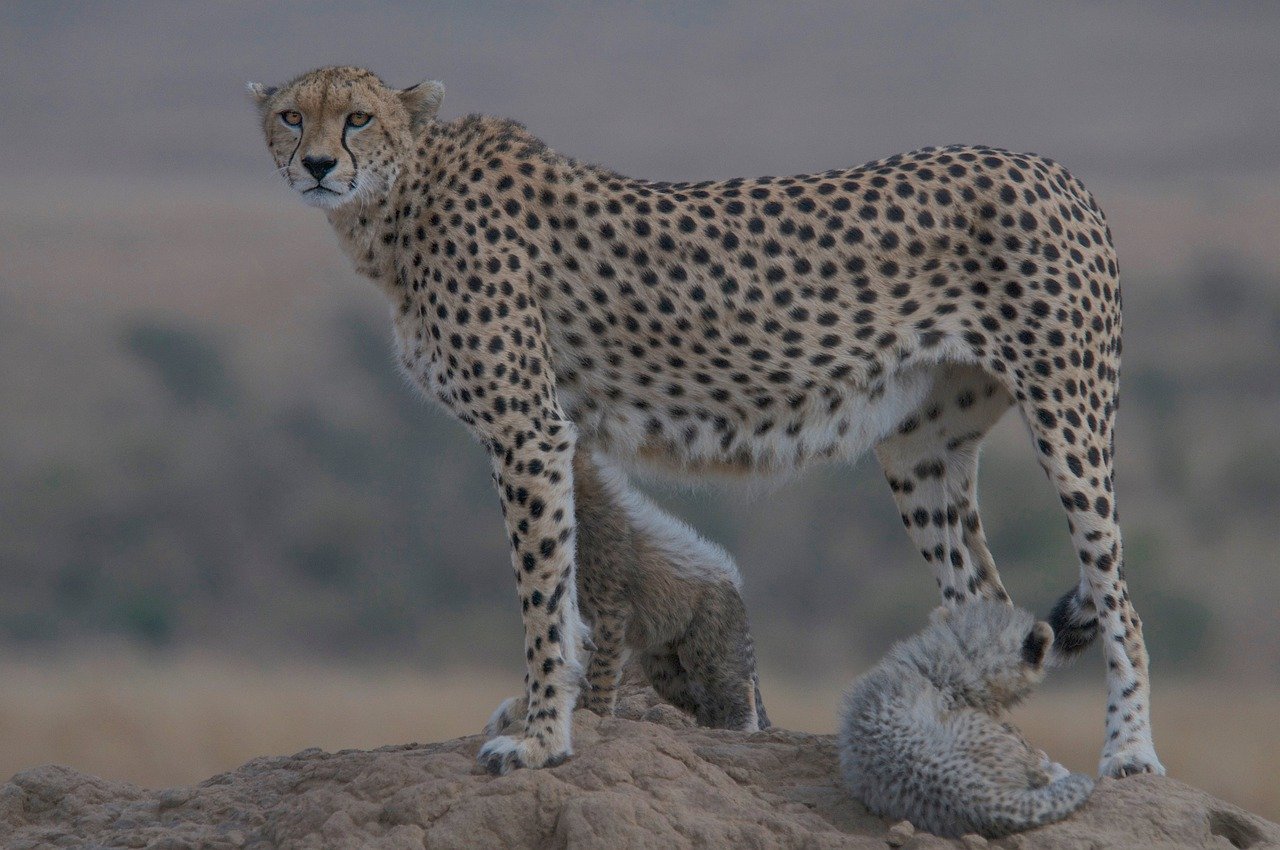
Conservation Efforts and Strategies
Conservation efforts are the backbone of preserving biodiversity and ensuring a sustainable future for our planet. These strategies are not just about protecting endangered species; they encompass a wide range of actions aimed at maintaining the delicate balance of ecosystems. One of the most effective approaches is the establishment of protected areas, which serve as safe havens for various species. These areas can range from national parks to marine reserves, allowing ecosystems to thrive without the pressures of human activity.
However, protected areas alone are not enough. Active community involvement is crucial for the success of conservation efforts. Engaging local communities in conservation initiatives fosters a sense of ownership and responsibility towards their natural surroundings. For instance, when communities are educated about the benefits of biodiversity and how it supports their livelihoods, they are more likely to participate in sustainable practices. This could include everything from participating in local clean-up drives to adopting sustainable farming techniques.
Moreover, sustainable practices in agriculture play a significant role in conservation. By promoting methods that enhance biodiversity, such as crop rotation and polyculture, we can create agricultural systems that are resilient and productive. These practices not only help in maintaining soil health but also support a variety of species, contributing to the overall stability of ecosystems.
Another vital strategy is the implementation of restoration ecology. This involves rehabilitating degraded ecosystems to their natural state. Restoration projects can range from reforestation efforts to wetland restoration, each contributing to the recovery of biodiversity. By restoring habitats, we not only help the species that reside there but also improve ecosystem services that benefit humans, such as clean water and carbon sequestration.
In addition to these strategies, international cooperation is essential for addressing transboundary conservation issues. Many species migrate across borders and are affected by global challenges like climate change and pollution. Collaborative efforts, such as global treaties and agreements, can help unite countries in their conservation goals. For example, the Convention on Biological Diversity (CBD) aims to promote sustainable development through the conservation of biological diversity, the sustainable use of its components, and the fair sharing of benefits arising from genetic resources.
Lastly, public awareness and education are fundamental in driving conservation efforts. The more people understand the importance of biodiversity, the more likely they are to support conservation initiatives. Educational programs, campaigns, and community workshops can empower individuals to make informed choices that positively impact the environment. Imagine if every person took small steps, such as reducing plastic use or supporting local conservation projects—collectively, these actions could lead to significant change.
In conclusion, conservation efforts and strategies are multifaceted and require the collaboration of individuals, communities, governments, and international organizations. By embracing a holistic approach that includes protected areas, community involvement, sustainable practices, restoration ecology, international cooperation, and public education, we can safeguard biodiversity for future generations. Remember, every effort counts, and by working together, we can make a difference!
- What are protected areas? Protected areas are designated regions where human activity is restricted to preserve natural resources and biodiversity.
- How can I get involved in conservation efforts? You can participate in local conservation initiatives, volunteer for environmental organizations, or simply adopt sustainable practices in your daily life.
- Why is biodiversity important? Biodiversity is crucial for ecosystem stability, providing essential services such as clean air, water, and food security.
- What is restoration ecology? Restoration ecology focuses on rehabilitating degraded ecosystems to restore their natural state and enhance biodiversity.
Frequently Asked Questions
- What is biodiversity and why is it important?
Biodiversity refers to the variety of life on Earth, encompassing different species, ecosystems, and genetic variations. It's crucial because it enhances ecosystem resilience, supports food security, and contributes to human well-being. Think of it as a safety net; the more diverse it is, the more stable and sustainable our environment becomes.
- How does biodiversity contribute to food security?
Biodiversity plays a vital role in food security by providing a wide range of crops and livestock. Diverse agricultural systems can better withstand pests and diseases, ensuring that we have a stable food supply. Imagine a buffet with various dishes; if one dish runs out, there are plenty of others to enjoy!
- What are some traditional farming practices that promote biodiversity?
Traditional farming practices, such as crop rotation and polyculture, help maintain biodiversity. These methods not only improve soil health and reduce pests but also create a balanced ecosystem. It's like having a well-rounded diet; each component plays its part in keeping the system healthy and thriving.
- What challenges does modern agriculture pose to biodiversity?
Modern agriculture often relies on monoculture, which can lead to a decline in biodiversity. By focusing on a single crop, we risk depleting the soil and making it vulnerable to pests and diseases. It's akin to putting all your eggs in one basket; if something goes wrong, the entire system can collapse.
- How does climate change affect biodiversity?
Climate change poses significant threats to biodiversity by altering habitats and disrupting ecosystems. Species may struggle to adapt to changing conditions, leading to shifts in population dynamics and even extinction. Think of it like a game of musical chairs; when the music stops, not everyone finds a seat!
- What are some effective conservation strategies?
Effective conservation strategies include establishing protected areas, promoting sustainable practices, and engaging communities in conservation efforts. These approaches help preserve habitats and maintain biodiversity. It's like building a fortress around your treasures; the more you invest in protection, the safer they are for future generations.
- How can individuals contribute to biodiversity conservation?
Individuals can contribute to biodiversity conservation by supporting local farms, reducing waste, and participating in community conservation projects. Every small action counts! Think of it as a ripple effect; your efforts can inspire others and create a wave of positive change.



















